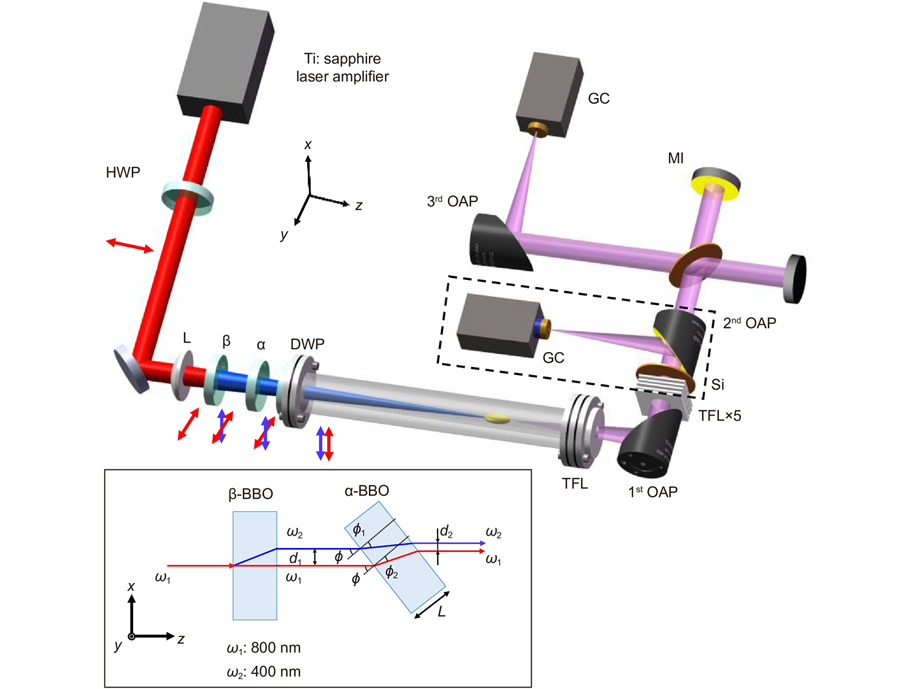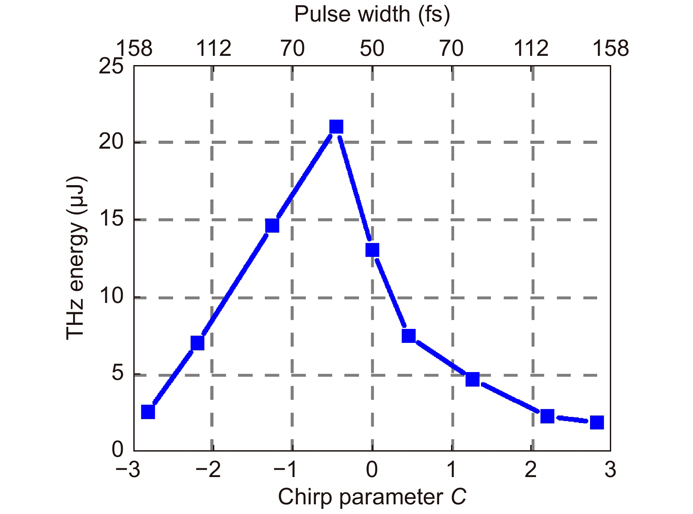Zhiqiang Yu, Nan Zhang, Jianxin Wang, Zijie Dai, Cheng Gong, Lie Lin, Lanjun Guo, Weiwei Liu. 0.35% THz pulse conversion efficiency achieved by Ti:sapphire femtosecond laser filamentation in argon at 1 kHz repetition rate[J]. Opto-Electronic Advances, 2022, 5(9): 210065
Search by keywords or author
- Opto-Electronic Advances
- Vol. 5, Issue 9, 210065 (2022)

Fig. 1. Experimental setup for high-energy THz pulse generation by filamentation in gases. The optical elements in the dashed frame need to be removed when measuring the THz autocorrelation curve. HWP: half-wave plate; L: lens; β: β-BBO; α: α-BBO; DWP: dual-wavelength plate; TFL: Teflon; OAP: 90° off-axis parabolic mirror; Si: silicon wafer; GC: Golay cell. Inset: tilting of α-BBO can further realize the precise spatial overlap of two beams.

Fig. 2. Pulse energy of THz radiation generated by femtosecond laser with different frequency chirps (bottom axis) and different pulse widths (top axis) in argon.
Fig. 3. Variation of the output THz pulse energy as a function of (a ) pumping laser energy in different gases and (b ) tilting angle of α-BBO (bottom axis), i.e. the time delay between the fundamental and second harmonic laser beams (upper axis) in argon. In (a): black squares – ambient air, red circles – nitrogen, and blue triangles – argon; solid lines: data fitting curves. (b) black squares: experimental data; red line: numerical simulation results.
Fig. 4. (a ) Autocorrelation traces and (b ) spectra of various energy THz pulses in argon.
Fig. 5. Schematic diagram of the electric fields of the two-color laser beams.
Fig. 6. Temporal delay (red solid line) and walk-off distance (blue dashed line) between two beams with respect to the tilting angle of α-BBO in the case of argon.
|
Table 0. Calculated temporal delay between two beams in the experiments.
|
Table 0. Energy conversion efficiency QTHz of THz pulse generated by the two-color field (800 nm + 400 nm) filamentation in argon gas.

Set citation alerts for the article
Please enter your email address



